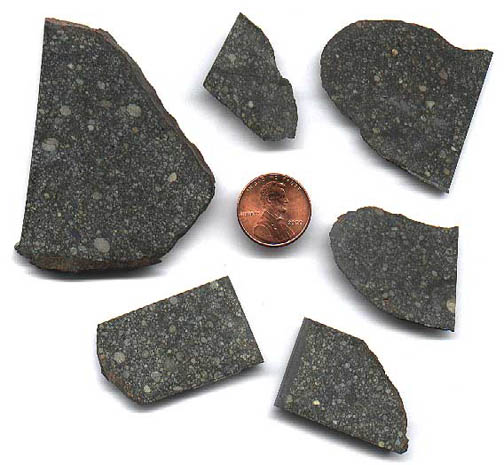
|
Condrites display one feature never found in rocks that form on Earth or, as far as we know, on other planets or moons: chondrules. The little gray, roughly spherical objects in the sawn meteorite fragments above are chondrules. Microscopic examination of chondrules reveals that they formed as melt droplets that cooled in space and were later incororated into rocky bodies after things cooled down enough for the dark gray matrix to accrete and glue everything together. The chondrules thus mark the earliest accretion while the rest of the meteorite reflects subsequent early phases of accretion. Chondrite meteorites come in several varietys. Most commonly found are "ordinary chondrites". These contain another feature never seen in rocks formed on Earth: metallic iron (easily detected using a magnet). Of great scientific interest are a second variety, the carbonaceous chondrites. These contain in their matrix water and a variety of organic compounds, including more than amino acids that formed in bitter cold of outer space! Chondrites contain the oldest solids in the Solar System and as such record the (non-gaseous) composition of the disk from which the Sun and planets formed as well as the major events that took place before the first planets formed. "Major events" includes geochemical evidence for the supernova that caused the gravitational collapse leading to our Solar System and textural evidence for major flare-ups as the early Sun began its life as a star. See a chondrite as you might find it on the ground:Image credit: Meteorites.com |
![]()
|
|
|
